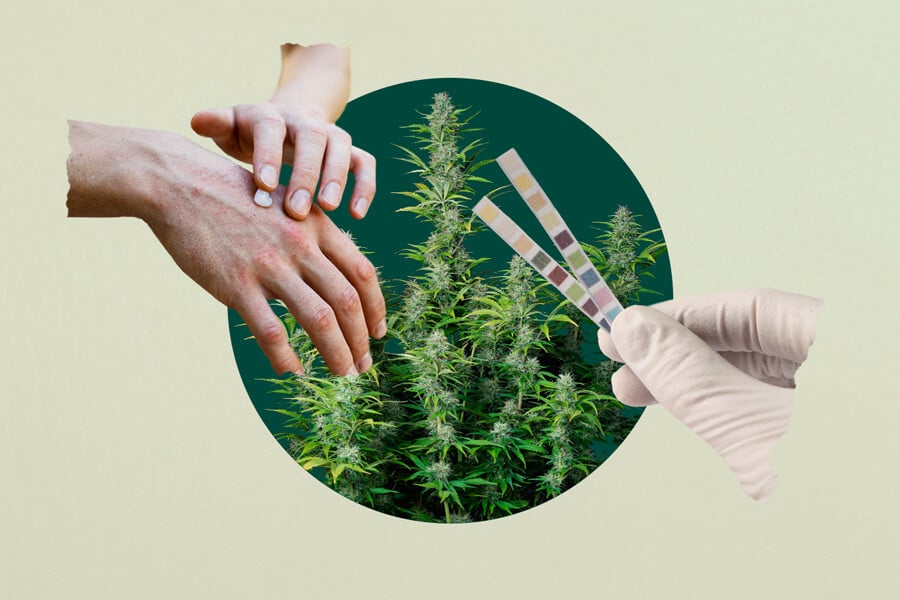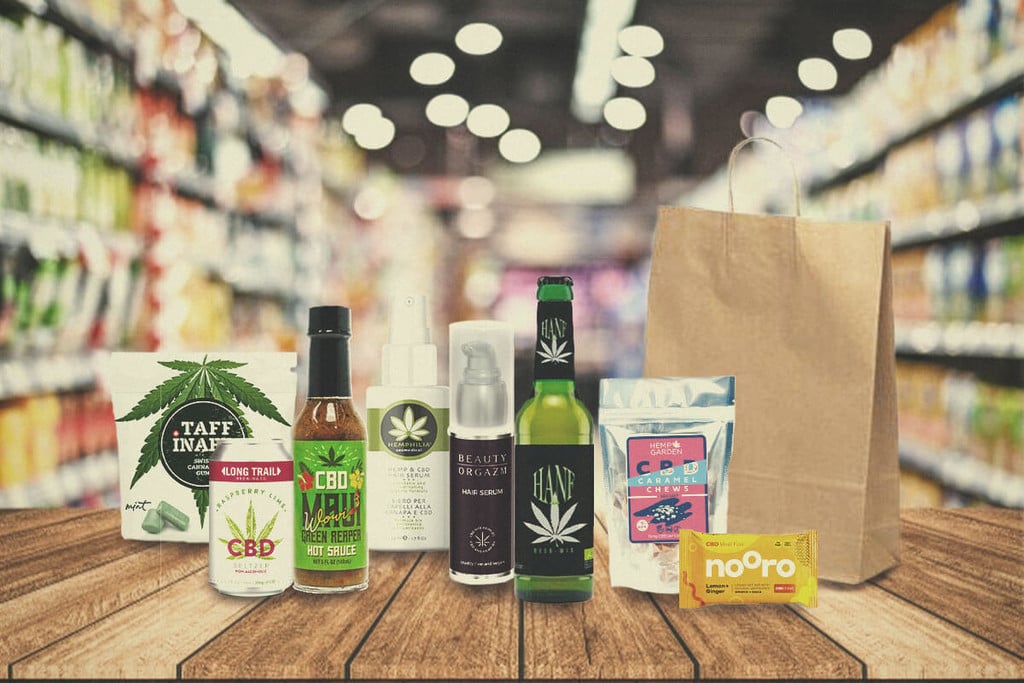.

How To Make Organic Cannabis Salve
Why not add some cannabinoids and terpenes to your skincare routine? Just like the rest of our body, our skin features endocannabinoid system components. You can influence this vital system by lathering THC, CBD, and other phytochemicals on your skin. Find out how to make your own organic cannabis salve below.
Contents:
As one of the most versatile plants on the face of the planet, cannabis has a long list of uses. Among these, many people use the herb in preparations applied to the skin. But cannabis doesn’t just make the skin feel hydrated and smooth like other topical products. Constituents of the flowers work in a very specific way that might help to influence skin cells (researchers are still figuring this out). Although we’re all awaiting conclusive findings, people all over the world find that cannabis salve adds something special to their skincare routines.
Keep reading to discover what makes cannabis salve different from other herbal topicals, and how to make cannabis salve at home to keep your skin glowing and happy.
What Is Cannabis Salve?
Cannabis salves or balms are topical products made using beeswax. This gives the mixture a hard finish and a long shelf life.
These preparations vary in their ingredients and contain a host of other botanicals that are beneficial to skin health.
The process of making cannabis salve involves extracting cannabis phytochemicals into a fat source, meaning the end product contains a variety of cannabinoids, terpenes, and other molecules that might benefit our biological barrier.
Below, you’ll discover the benefits of topical cannabis. After that, we’ll compare the differences between salves and other popular topical preparations.
The Benefits of Topical Cannabis
Why do people choose to apply cannabis to their skin? Why not just smoke, eat, or vape it? Well, it all boils down to the intention behind the application. If you’re aiming to get high or want cannabinoids to enter systemic circulation, these methods of administration work just fine. But if you’re using cannabis for the sake of skin health, it makes perfect sense to put it exactly where you want it to work.
Topical cannabis delivers cannabinoids and other phytochemicals directly to the skin. But what does it do there? You’ve probably heard of people lathering their skin in shea butter and vitamin E—so why cannabis?
The herb contains myriad cannabinoids. Many of these molecules, including the psychotropic component THC, bind to cannabinoid receptors in our body. These sites make up the endocannabinoid system (ECS), alongside signalling molecules and metabolic enzymes.
To keep things simple, the ECS basically helps to keep our bodily systems in balance. It stops things from getting too sluggish or from going overboard. It fulfils this regulatory role almost everywhere, from the brain and gut to the skeleton and skin. The ECS facilitates a biological balancing act in the skin[1], and plays a role in cell growth, differentiation, hormone production, and controlled cell death.
Before you get any funky ideas, we should offer a word of warning. You won’t get high by lathering up your skin with high-THC cannabis salve. When applied to our protective barrier, only extremely tiny portions of cannabinoids make it through to the bloodstream. Instead, the vast majority of constituents perform local effects on skin cells.
How Does Cannabis Salve Differ From Lotions and Creams?
There are many different topical cannabis products. But what exactly makes salves different from lotions and creams? Let’s break it down:
- Salves: Salves are a combination of oils and beeswax. These ingredients serve as the basic foundation to which crafters often add essential oils, nut butters, and vitamins. Salves contain no water, which gives them a hard consistency.
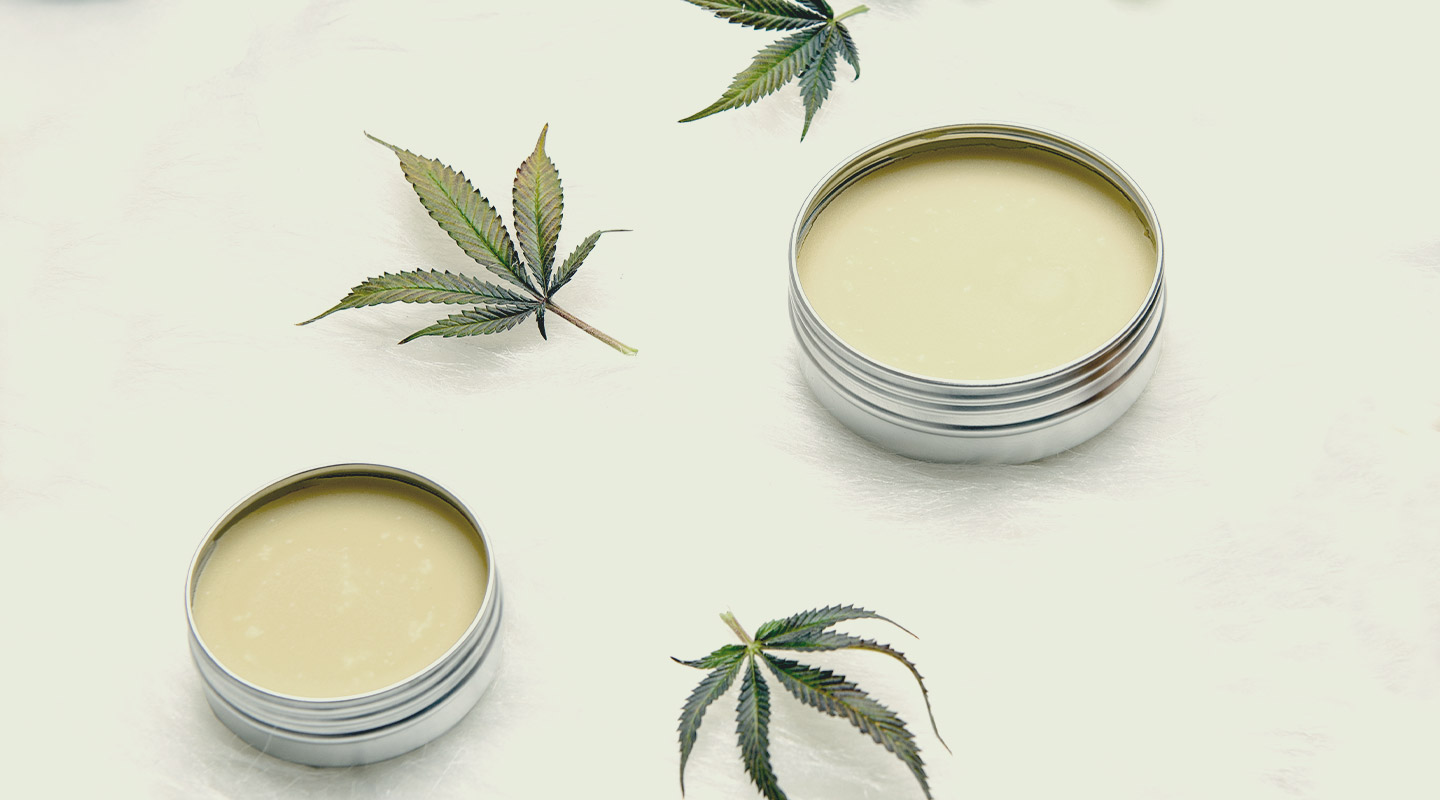
- Creams: These preparations contain both oil and water. For this reason, creams have a lighter consistency than salves. Because water and oil naturally repel each other, the addition of an emulsifying agent keeps them incorporated. A water content of around 45% makes them easy to spread across the skin.

- Lotions: These topicals contain an even higher water content than creams. They are easy to apply across a larger area of skin, weigh less, and are non-greasy because of the lower oil content.
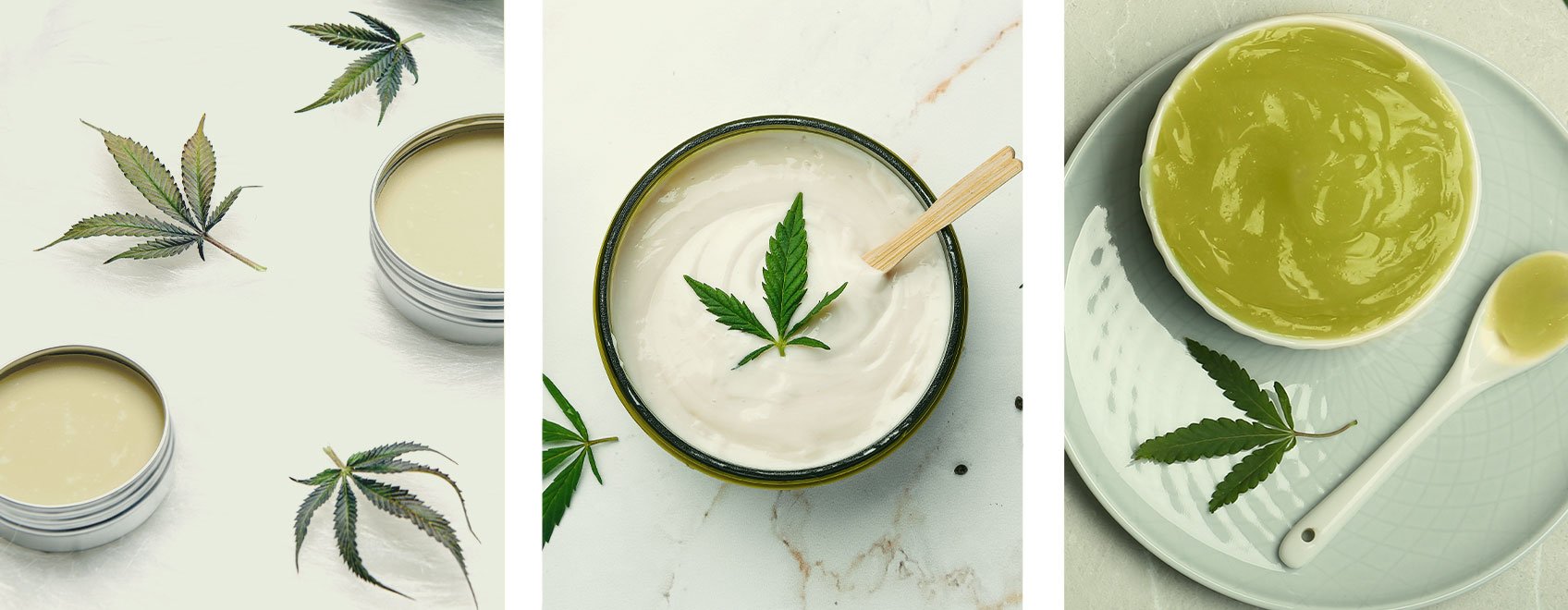
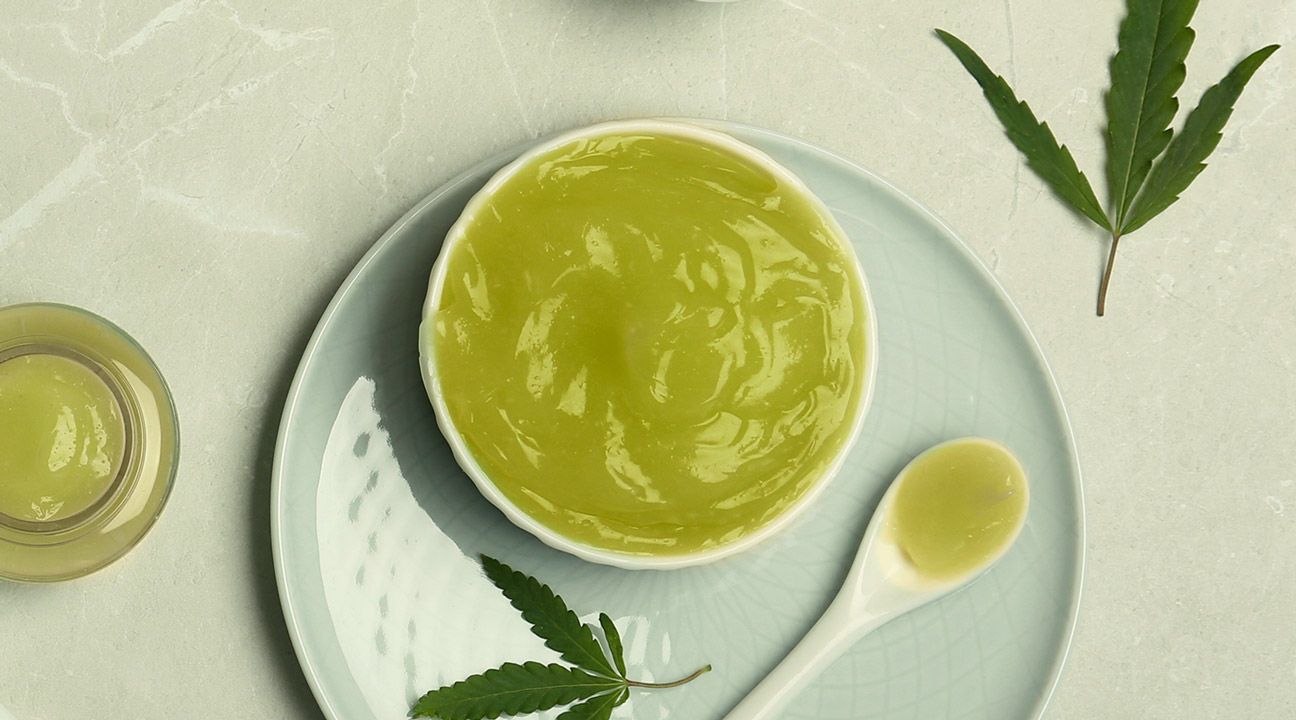
Cannabis Salve vs RSO
You’ve likely heard of Rick Simpson oil (RSO). This namesake of a famous Canadian cannabis activist is a potent crude extract of cannabis oil. During the process, extract makers mix cannabis with high-strength alcohol to pull out all of the cannabinoids, terpenes, and other desired constituents. After boiling off the booze, they are left with a viscous, tar-like substance.
Cannabis salve differs from RSO in numerous ways. For one, the former's extraction process uses fats, not alcohol. Salves are also more diluted, in that they feature cannabinoids and terpenes infused into a base and mixed with other components.
Differences Between Cannabis Salve and CBD Oil
Many CBD lovers report great results after adding CBD oil to their skincare regimen. Although primarily made for ingestion, CBD does feel nice on the skin. Products usually feature a carrier of either olive or hemp seed oil, which makes them quite runny.
In contrast, salves are much more solid. They are slightly easier to handle and less messy when applied to the skin, and they contain additional ingredients suited for external application.
THC Salve vs CBD Salve
The contents of cannabis salves depend on the material used to make them. High-CBD flowers will render a different product than THC-rich buds—so which one should you choose?
Ongoing studies are still exploring the skin-related benefits of both compounds. Each interacts with the ECS in unique ways. Whereas THC directly binds to ECS receptors, CBD takes an indirect, but equally intriguing, route. Still, we need more research to determine exactly how both work on human skin cells.
Organic Cannabis Salve Recipe: How To Make THC or CBD Salve at Home
Now that you’re aware of what constitutes a cannabis salve and why people use them, it’s time to get to our organic cannabis salve recipe. It’s easy, straightforward, and good for the skin. Gather the items listed below, and get to crafting!
Equipment & Ingredients
Grab the following equipment and ingredients to make your own organic cannabis salve at home.
| Equipment | |||||||
|---|---|---|---|---|---|---|---|
| Double boiler (saucepan and Pyrex bowl) | Cheesecloth | ||||||
| Mixing bowl | Shallow storage jar | ||||||
| Baking tray | Aluminium foil | ||||||
| Ingredients | |||||||
| 7–10g cannabis buds of your choice | ⅓ cup olive oil | ||||||
| ⅓ cup beeswax | 1½ cup coconut oil | ||||||
| Equipment | |||||||
|---|---|---|---|---|---|---|---|
| Double boiler (saucepan and Pyrex bowl) | Cheesecloth | ||||||
| Mixing bowl | Shallow storage jar | ||||||
| Baking tray | Aluminium foil | ||||||
| Ingredients | |||||||
| 7–10g cannabis buds of your choice | ⅓ cup olive oil | ||||||
| ⅓ cup beeswax | 1½ cup coconut oil | ||||||
⚠️ Disclaimer: you experiment at your own risk
Directions
You have everything you need! Follow the simple steps below to whip up a batch of your own cannabis salve in no time.
Step 1: Decarb
First things first; you need to decarboxylate your cannabis flowers. This word sounds complex, but it simply refers to “activating” your buds through heat. Raw flowers contain cannabinoid acids in the form of THCA and CBDA. Decarbing knocks the “A” out of the equation using nothing but heat and time. Follow these steps to decarb your buds:
- Grind up your bud and preheat your oven to 110°C.
- Line the baking tray with aluminium foil.
- Spread the ground bud evenly across the tray.
- Place in the oven for 40 minutes.
- Remove and let cool.


Step 2: Infuse Coconut Oil
Next, you’ll need to extract all of the goodness from your decarbed material. Cannabinoids are lipophilic (they absorb well into fat), so the coconut oil does a great job of extracting them.
Here’s how to do it:
- Set up your double boiler. Place your saucepan on the hob and add a few inches of water. Slot your Pyrex bowl into the saucepan, making sure it sits above the water level (empty some water if it touches the bottom of the bowl).
- Place your coconut oil into the bowl and mix in your decarbed bud.
- Set the heat to low (55–65°C) and let it simmer for one hour, stirring occasionally.
- Remove the oil from the heat and strain through the cheesecloth into a mixing bowl.
Step 3: Mix Everything
Now, clean your double boiler and set it up in the same way again to melt your beeswax over low heat. Add your infused oil and olive oil, and stir thoroughly to combine.
Step 4: Pour and Store
Once mixed, remove the mixture from the heat and pour into shallow storage jars to allow it to cool and harden. We recommend using shallow glass Mason jars or steel screw-top jars, as these allow you to easily apply the salve without having to reach down into a deeper container.
How To Use Cannabis Salve
Apply your cannabis salve wherever you like! You can use it on your hands, feet, lips, arms, or wherever you feel like your skin needs a bit of love and care. That said, it’s best to keep it to external use only. Enjoy!
- The endocannabinoid system of the skin in health and disease: novel perspectives and therapeutic opportunities https://www.sciencedirect.com


























